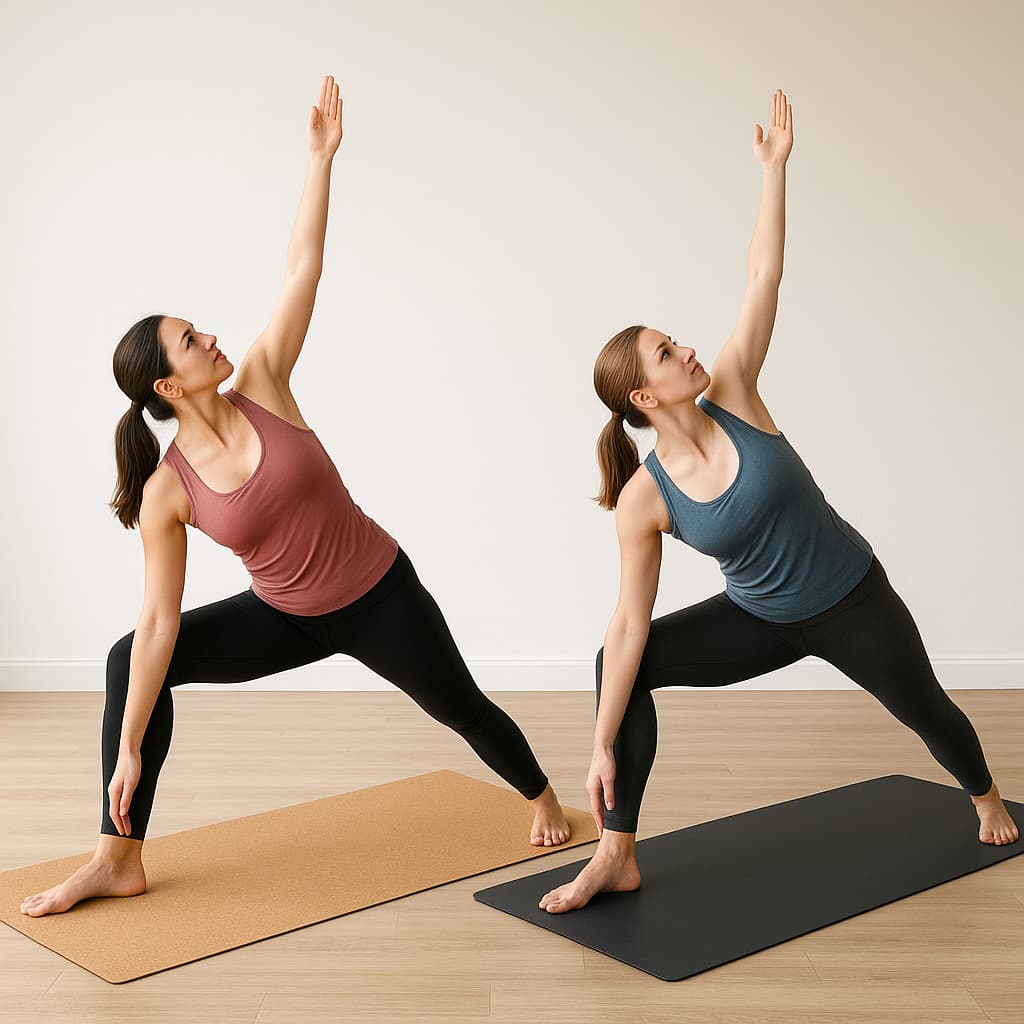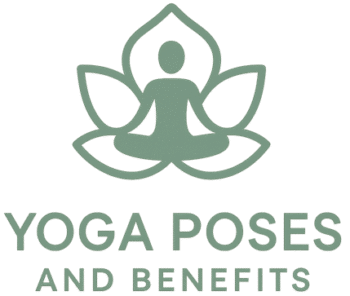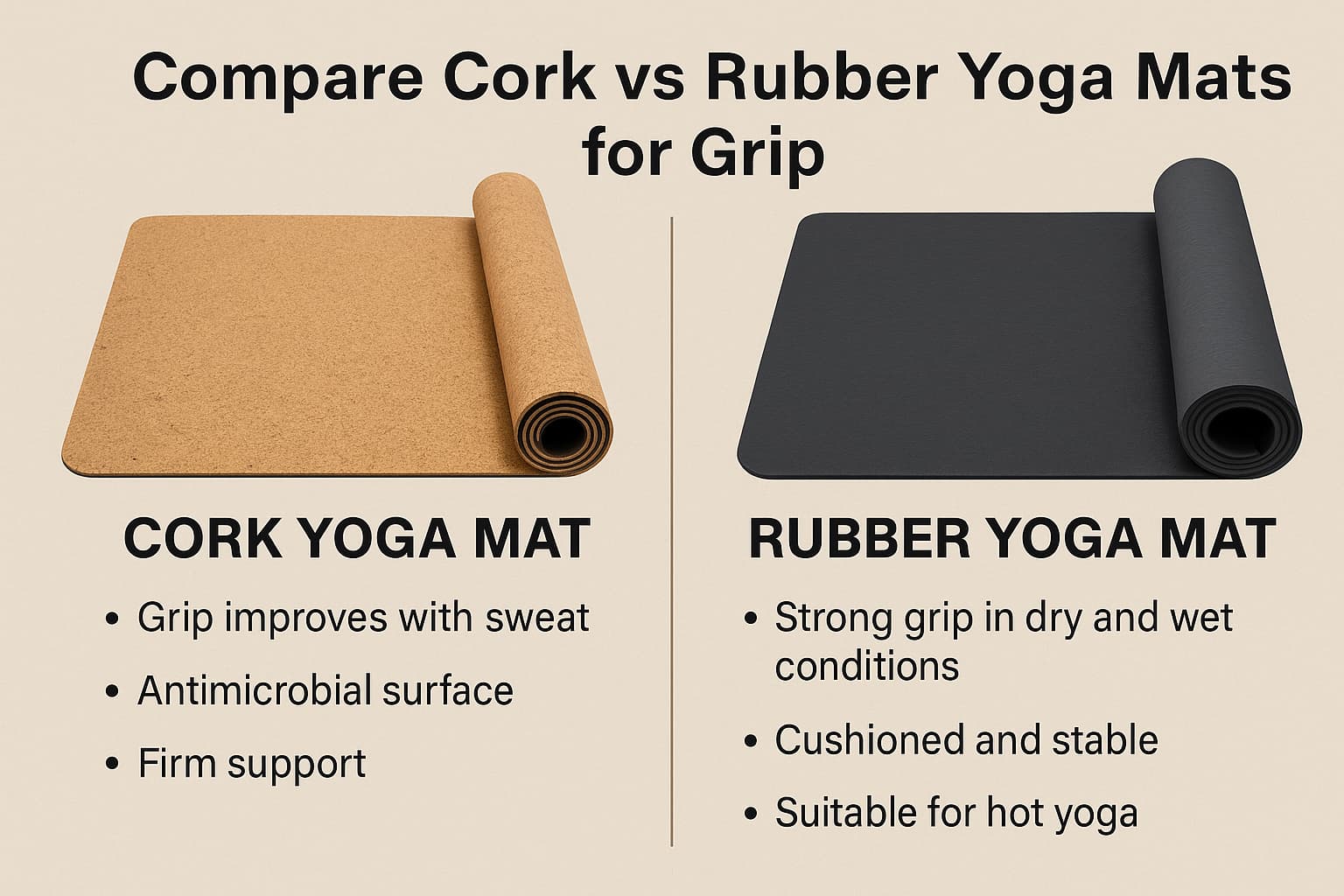Why Grip Matters in Yoga Practice
Grip is essential for safe and confident yoga. A non-slip surface on a yoga mat supports balance, alignment, and proper posture. Without it, sliding hands and feet disrupt focus and increase injury risk. For beginners in Hatha yoga or Vinyasa yoga, traction provides stability when learning foundational poses.
Sweaty practices such as Hot Yoga or Bikram yoga demand mats that can handle moisture without becoming slick. Grip also helps students in restorative yoga or Yin yoga hold stretches comfortably without shifting. When stability is present, breath and awareness stay steady.
Benefits of strong grip in yoga:
- Secure alignment in standing poses like Warrior II
- Fewer slips in downward dog and plank
- Excellent grip for arm balances such as Crow
- Greater comfort during restorative postures
What is a Cork Mat?
A cork yoga mat is created from the bark of cork oak trees and often paired with a rubber layer beneath. This natural material is renewable, antimicrobial, and eco-friendly. The smooth yet slightly textured surface makes cork mats unique compared to foam or PVC options.
Cork yoga mats improve grip with sweat, which is why many Hot Yoga practitioners prefer them. They also resist bacteria and odor buildup. For new yogis, the firmness encourages correct alignment while still offering enough cushioning.
Key features of cork mats:
- Renewable and natural material
- Grip strengthens with perspiration
- Antimicrobial qualities for hygiene
- Stable support for Ashtanga yoga or dynamic flows
Grip Performance of Cork
Grip performance is where cork yoga mats excel. At the start of class they may feel smooth, but moisture quickly activates traction. For sweaty hands in Sun Salutations or heated flows, cork provides excellent grip that grows stronger over time.
Benefits of cork grip:
- Reliable hold in Hot Yoga
- Better stability in standing sequences
- Secure transitions for balance poses
- Long-lasting texture that resists wear
Spritzing water before Yin yoga or cooler sessions helps activate grip immediately. Cork yoga gives beginners confidence as they progress into more challenging postures.
What is a Rubber Yoga Mat?
Rubber mats are widely used across yoga studios and come in natural rubber or synthetic forms. Natural rubber is sustainable and offers a firm yet cushioned feel, while synthetic versions are often lighter and lower in cost.
The mat rubber surface feels tacky, creating stability from the first pose. Many rubber mats come in varied thickness options, providing joint cushioning for beginners practicing on hard floors.
Why practitioners choose rubber mats:
- Consistent grip without moisture
- Options in thickness for comfort
- Natural rubber for eco-conscious buyers
- Broad availability at different prices
Grip Performance of Rubber Mats
Rubber yoga mats deliver steady traction whether dry or wet. Beginners in restorative yoga or Vinyasa yoga feel supported immediately. Unlike cork, they do not require moisture to enhance hold.
Strengths of rubber grip:
- Reliable traction for any yoga style
- Cushioning that supports knees and wrists
- Stable footing during dynamic Ashtanga flows
- Comfort across heated or cool environments
For very sweaty Hot Yoga sessions, adding a towel can maintain grip. Rubber mats remain versatile, making them a dependable choice for all levels.

Side-by-Side Comparison
When you compare cork vs rubber yoga mats for grip, both offer unique strengths.
In dry practice:
- Rubber mats provide instant traction
- Cork mats may feel smoother until activated
In heated practice:
- Cork yoga mats improve as sweat builds
- Rubber mats remain reliable but may need a towel
Durability:
- Cork yoga mat surfaces resist breakdown with use
- Rubber mats can show wear in high-contact areas
Each option supports stability, but the right choice depends on yoga style and environment.
Pros and Cons Overview
Cork Yoga Mat
- Pros: Eco-friendly, antimicrobial, excellent grip when sweaty, sustainable natural material
- Cons: Heavier, smoother when dry, higher price
Rubber Mat
- Pros: Instant traction, wide range of thickness, strong cushioning, accessible pricing
- Cons: Can retain odor, wears faster with heavy use, may cause latex allergies
Both mats rubber or cork provide features beginners value.
Choosing the Right Mat for Your Yoga Practice
Selecting a yoga mat depends on practice style, comfort, and environment.
- Hot Yoga or Bikram: cork yoga mats excel as sweat enhances grip
- Vinyasa or Ashtanga: rubber mats support fast transitions
- Restorative or Yin yoga: thicker natural rubber mats offer comfort and cushioning
Budget and sustainability also guide decisions. Eco-conscious yogis may prefer cork yoga mats, while others may choose rubber mats for their wide availability and affordability.
Cork rubber comparisons highlight that each option offers excellent grip under different conditions. Cork yoga mat grip strengthens with heat and sweat, while rubber yoga mats provide consistent stability from start to finish.
For new yogis, comfort, practice style, and values matter. Testing both surfaces reveals which yoga mat best supports your journey. A reliable mat with a non-slip surface creates confidence, letting you focus fully on breath and movement.

